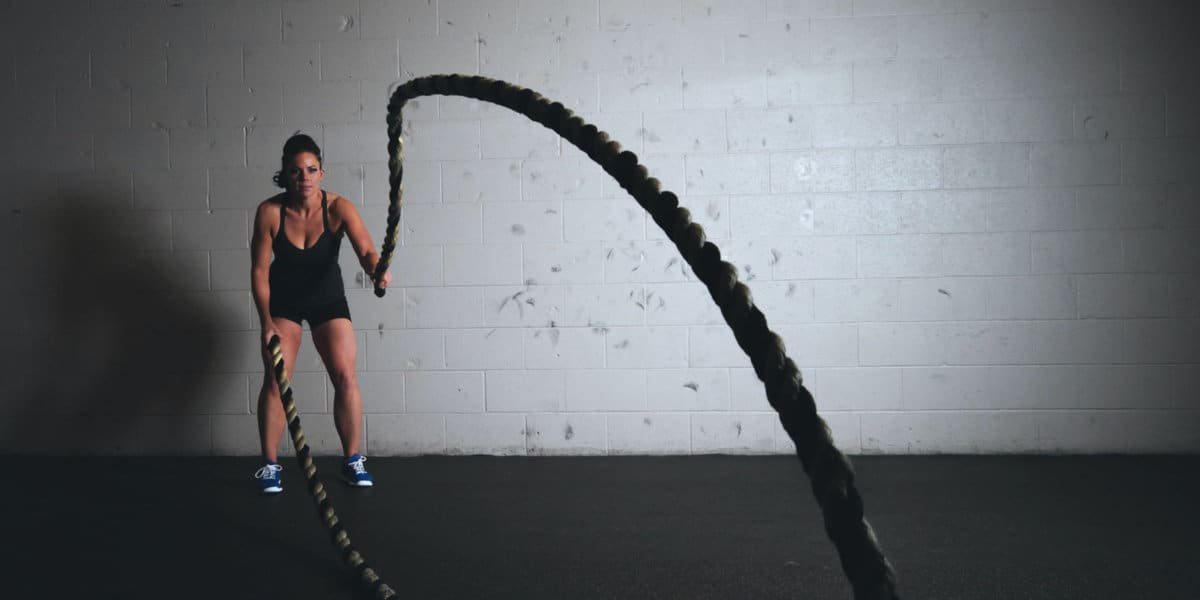Since the dawn of the fitness industry, cardio has been used by bodybuilders and novices to achieve one goal – decrease body fat percentage.
It is not a secret that many athletes want that six-pack and the first thing that is associated with nice-looking abdominal muscles is cardio…
However, is cardio really that useful for dropping these extra kilos or is it just a waste of time?
Well, today we are going to find that out, but first…
What is the price of cardio?
Though cardio may offer a variety of benefits that can help us get closer to the ultimate goal of burning extra calories and losing weight, there are hidden costs to it…
So let’s have a look at those!
Cardio is time-consuming.
We live in a world where everything moves fast and if we are not adaptive, we may fall behind.
Putting these extra 30-40 minutes after training is something not many people could afford.
Students, working adults, pregnant women, and entrepreneurs are managing their schedules very strictly and don’t have any spare minutes.
We know for sure that our time is our most valuable asset, so we should spend it wisely.
Furthermore, time spent on cardio is NOT the only price we pay.
Cardio right after strength training decreases our performance.
Our anaerobic work (weight lifting) suffers when we combine it with aerobic work (cardio)
In other words, doing cardio right after our strength training is NOT a good idea.
These are two different types of stress for our body and they require the adaptation of two different types of muscle tissues.
We want to be as efficient as possible.
That’s why we shouldn’t be doing cardio right after our weight lifting session.
But does this mean that cardio is bad for us and we shouldn’t be doing it at all?
Let’s find out in the next paragraph…
Should we totally exclude cardio from our training?
It really depends on our goals.
For instance, if you are trying to lose some body fat for the summer because you want to look good on the beach, then cardio might not be necessary.
Walking 10k steps per day or adding some other aerobic work such as swimming, running or cycling is a great way to increase your physical activity.
However, if we are preparing for a bodybuilding competition or a photoshoot, then cardio might be able to come in handy.
“But you said that cardio right after training will make our progress in the gym suffer.”
Yes, and the solution is simple.
You should split the cardio from your strength training! Simply, do cardio a couple of times per week when you are NOT having a weight lifting session at the gym.
If you are very busy on your rest days, you can try doing cardio in the morning and then have strength training in the evening.
If your goal is to lose body fat as fast as possible, leave cardio for the last couple of weeks of your plan.
Keep your physical activity high and progressively add cardio if you feel that you’ve hit a plateau.
Things to keep in mind:
- Strength training burns more calories than cardio
- HIIT training burns more calories than cardio and requires less time
FAQs: Is Cardio a Waste of Time or a Useful Tool for People with Fatty Liver?
1. Is cardio exercise beneficial for individuals with fatty liver? Yes, cardio exercise can be a useful tool for people with fatty liver. Studies suggest that regular aerobic exercise can help improve liver health by reducing fat accumulation and promoting weight loss, which is beneficial for those with fatty liver disease.
2. How does cardio exercise affect fatty liver? Cardiovascular exercise, like walking, jogging, or cycling, can enhance blood circulation and oxygen delivery to the liver. This increased blood flow can aid in the removal of fatty acids from the liver, potentially reducing fat accumulation.
3. Can cardio exercise alone cure fatty liver disease? While cardio exercise can significantly contribute to improving liver health, it may not be sufficient to cure fatty liver disease entirely. A comprehensive approach that includes a balanced diet, lifestyle changes, and possibly medical treatment, if required, is often recommended for better outcomes.
4. How much cardio exercise should I engage in if I have fatty liver disease? The appropriate amount of cardio exercise may vary depending on an individual’s health condition and fitness level. It is recommended to consult with a healthcare professional or a certified fitness trainer to develop a personalized exercise plan suitable for your condition.
5. Are there any specific types of cardio exercises that are more beneficial for fatty liver? Various forms of cardio exercises, such as brisk walking, running, swimming, or cycling, can be beneficial for people with fatty liver. Choose an exercise that you enjoy and can sustain in the long term, as consistency is key to seeing improvements in liver health.
6. Can excessive cardio exercise be harmful to the liver for people with fatty liver? Intense or excessive cardio exercise may lead to overtraining, causing physical stress on the body, including the liver. It’s important to strike a balance and avoid overexertion. Again, seeking guidance from a healthcare professional or fitness expert is essential.
7. Are there any precautions I should take while doing cardio exercise with fatty liver disease? Individuals with fatty liver disease should start any exercise program gradually and avoid sudden, intense workouts. Staying hydrated, eating a balanced diet, and monitoring any discomfort during exercise are essential precautions.
8. Is strength training also beneficial for people with fatty liver disease? Yes, strength training can complement cardio exercise in improving liver health. Resistance training can help build muscle mass, improve insulin sensitivity, and support weight management, all of which are beneficial for individuals with fatty liver.
9. Can I see results from cardio exercise in improving fatty liver health, and how long does it take? The timeline for seeing improvements in fatty liver health through cardio exercise can vary from person to person. Consistency and dedication to a healthy lifestyle are key factors that will impact the rate of improvement. Some individuals may start experiencing positive changes in a few weeks, while others may take longer. Monitoring liver enzyme levels through medical check-ups can provide insights into progress.
Takeaways:
Cardio is NOT a magical tool that makes you lose fat.
It is just a tool to increase your physical activity and burn more calories.
Cardio could be used to manipulate our calorie consumption. In other words, you could eat your favorite cake IF you have burned some extra calories this day (via cardio)
Focus on progressing on the compound movements in the long-term and walk more.
Take the stairs, instead of the elevator, park further away from the supermarket.
Implement cardio ONLY if it gives you pleasure and you can afford to spend your time on the cardio machines.
We hope that this article helped you understand some important information on this “magical” thing called cardio.
If so, feel free to spread the love by sharing it with a friend who might need to read this.
Originally posted 2022-07-23 23:23:39.




